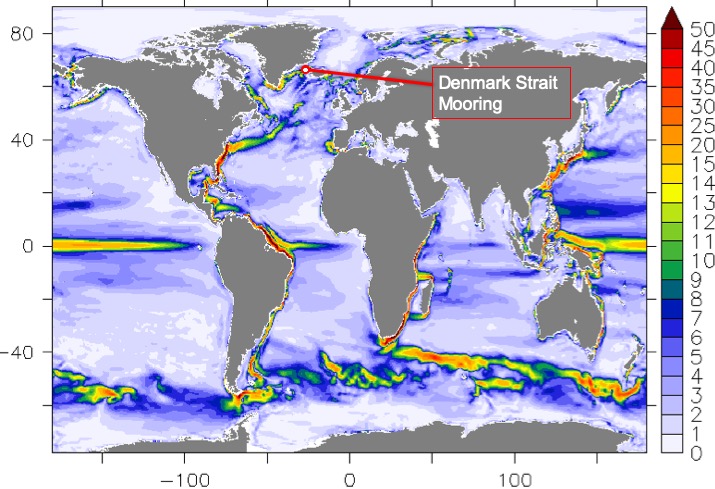Ocean observations are complex and expensive and therefore sparse, while model simulations can have errors. Ocean syntheses provide an ideal description of ocean circulation as they are based on optimal methods for combining local observations with dynamic models. In addition, model parameters such as mixing parameters are optimized and used to improve model systems. We create such a synthesis (GECCO3 – the German contribution to ‘Estimating Circulation and Climate of the Ocean‘) to integrate the data collected in RACE and other projects into an ocean model. It is an improved, higher-resolution (0.4° in comparison 1° of GECCO2) synthesis based on the ocean configuration of the high-resolution MPI-HR model, which should also be used to initialize climate predictions. Furthermore, in the Denmark Strait data of the local deep water flow is acquired with a mooring to monitor an important component of the Atlantic Meridional Overturning Circulation.
Objectives
- Evaluation of the GECCO3 synthesis by comparison with the data collected in the collaborative project NORDATLANTIK/RACE to determine the extent to which model resolution impacts processes such as the transport of heat and freshwater with the North Atlantic Current
- Analysis of key variables of the Atlantic circulation associated with the Meridional Overturning Circulation or the transports through several passages based on GECCO3 and comparison with observational data acquired in previous project phases
- Extension of the mooring based flow measurements through Denmark Strait, which were realized since 1996, and comparison with high-resolution modeling
Methods
- Ocean syntheses by assimilation of project and other data with a variational method
- Assimilation of temperature and salinity measurements, as well as satellite data of sea-level anomalies, and surface temperature and salinity
- Mooring in the Denmark Strait with current meter measurements

PIs
Armin Köhl, Institute of Oceanography, University of Hamburg
Detlef Stammer, Institute of Oceanography, University of Hamburg
Team
Alberto Elizalde-Arellano, Institute of Oceanography, University of Hamburg
Hossein Mashayekh, Institute of Oceanography, University of Hamburg
